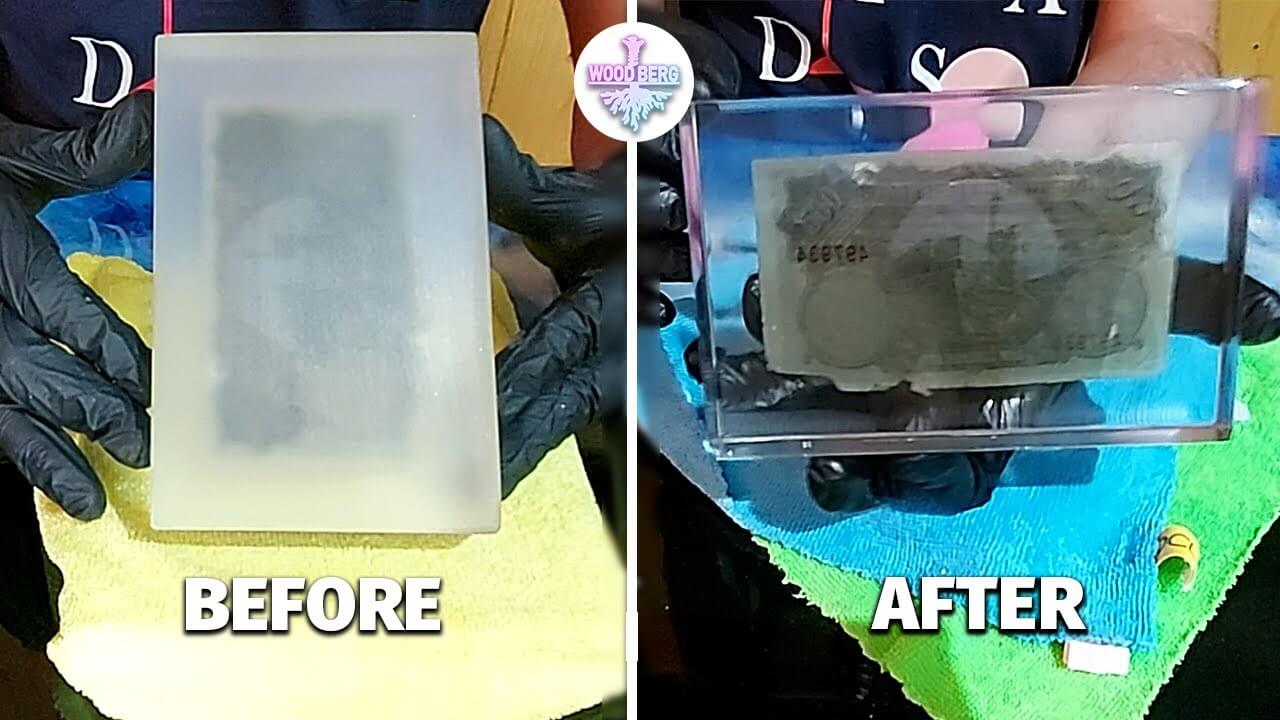
The most important main factor for proper epoxy resin curing is temperature.
The ideal temperature for your resin workspace and epoxy products should be around 22-25°C. If this is not achieved, the resin will not cure properly, especially at low temperatures.
Fortunately! We have some useful tips and tricks to ensure resin cures perfectly during winter!
3 simple tips to ensure perfect resin pouring and curing:
- • Epoxy resin containers and products must be stored in a warm area during winter
- • Make sure to set the workspace temperature to no less than 22°C, preferably between 24-25
- • Make sure to keep the workspace temperature warm during the first hours of work
Why is temperature an important factor when working with resin?
1. Make sure the resin product is at room temperature
The texture of resin at warm room temperature is completely pure and transparent with a honey-like texture. On the other hand, when resin is cold, it is very thick and colored with a milky cloudy appearance due to hundreds of thousands of bubbles caused by the cold (which you will never be able to get rid of) except by using heat.
Cold resin has a very dense and thick texture, making it difficult to pour and work with. Illustrated in the image below

It will be very thick with a milky cloudy appearance due to hundreds of thousands of bubbles caused by the cold.

and makes it extremely difficult to work with.
It won't self-level as easily as resin at warm room temperature

Even after using a flame torch, small bubbles will remain under the surface of the epoxy resin.
How can I control the temperature of my resin?
If your resin products are stored in a cold area, whether during delivery or at your home.. you will need to raise the resin temperature before use. You can easily do this by making a warm water bath for the epoxy containers, by:
- • Always warm the resin and hardener containers before measuring and mixing.
- • Place the containers in a warm water bath: the water does not need to be very hot, warm is better (22-25 Celsius)
- • Make sure to tightly close the containers before placing them in water so water does not leak inside the material (you can also use plastic bags).
- • Let the resin containers stay in warm water for no less than 5 - 10 minutes, so the product warms up.

After finishing the warm water bath, and warming the resin to a good working temperature, make sure to dry the containers from any water/spray on the outside.

Resin at room temperature becomes smooth and not dense, perfectly clear with a beautiful consistency and high transparency without bubbles.

2. Make sure the resin workspace during winter is always at a temperature of 22 - 25 Celsius.
In the cold winter months, the best scenario you can do is to use a heater / warm air conditioner in the room you will work in.
When the room temperature is very cold, resin will take longer to cure and may not cure at all, producing small bubbles inside at the same time. If this happens, just move your resin project to a warmer room where it can cure better over the next 24 hours.
💡 Tip: If the resin piece is still sticky even after 24 hours, and in a warm workspace, then temperature is not the problem. It is likely a matter of incorrect mixing ratios when weighing the material.
3. Store epoxy resin products in a warm place
Make sure your epoxy resin containers, whether used or new, are stored in a warm room / dry area and away from direct sunlight where the temperature is about (24-27) only in winter.
💡 Tip: Store epoxy resin out of reach of children.
By following these three easy steps, we guarantee that your resin and Jesmonite products will cure properly without any bubble formation or defects, within a timeframe of 24 to 35 hours, depending on the product you use.
I hope this is helpful! Please leave any questions or comments below!
You can follow our Instagram page for all the latest in the world of resin and Jesmonite through clicking here



5 comments
سجود
بدي اضيف انه اذا كانت الغرفة باردة مش بس بظهر فقاعات الريزن بتعرض لصدمة وجها بكش اذا كان المكان بارد كثير يعني بنصقع او بعد ميجف بتشكل غيمه ضبابية عالوجي مابتروح الا اذا حفيناه مرة ثانية وارجعنه صبينه طبقة فوقه
سجى زهران
جدا مفيد ولكن لا تتوفر كل الظروف المناسبة يعني بكل بساطة سيمر الشتاء بأعصاب متعبة 😔
ايمان زيد
شكرا على المعلومات مفيده جدا
Maream Ahmad
فعلا معلومات جدا قيمه
Zena
Thank you 🌹
Leave a comment
All comments are subject to moderation before being published.
This site is protected by hCaptcha and the hCaptcha Privacy Policy and Terms of Service apply.